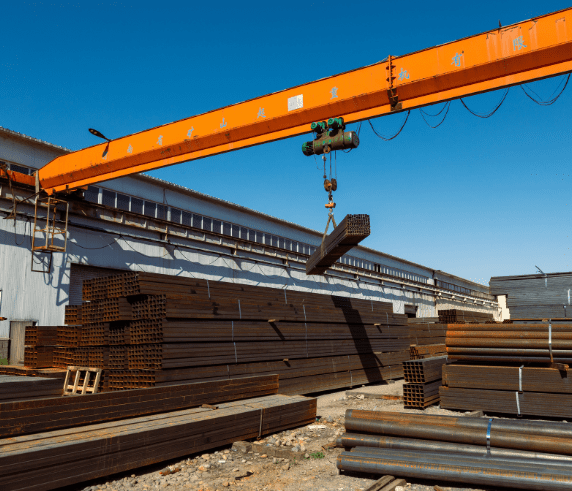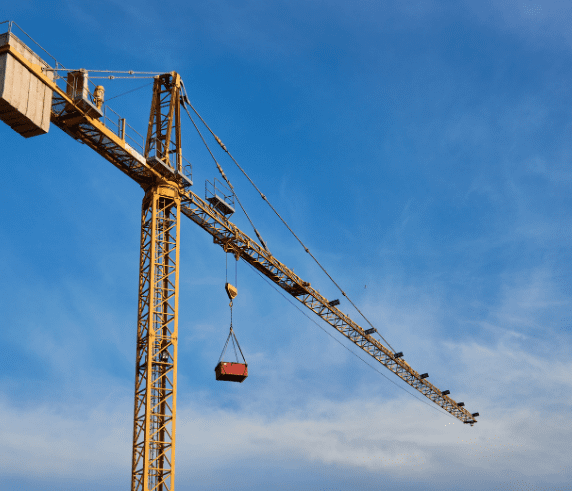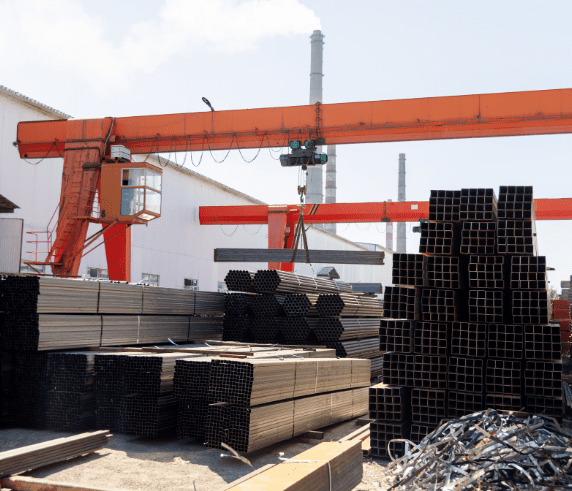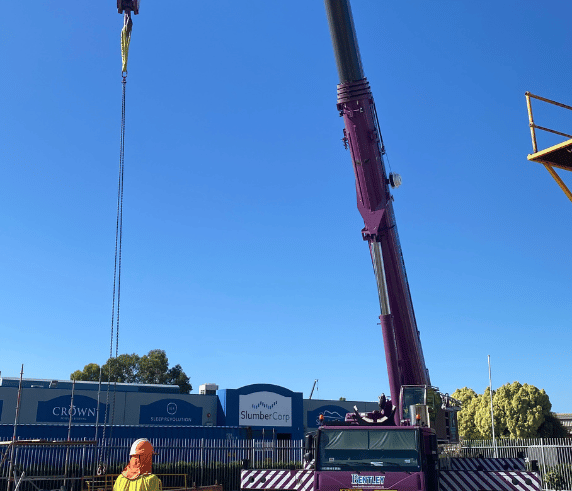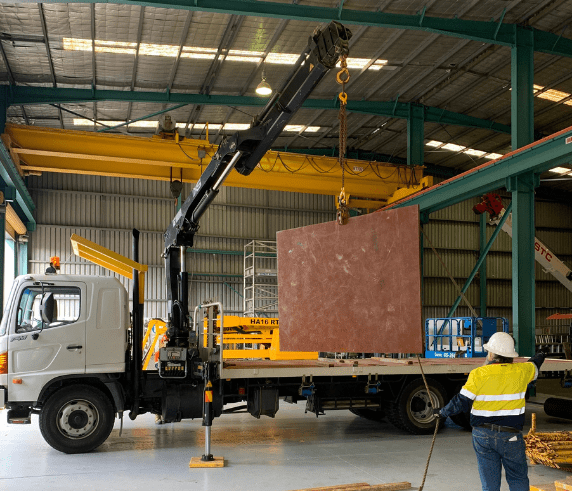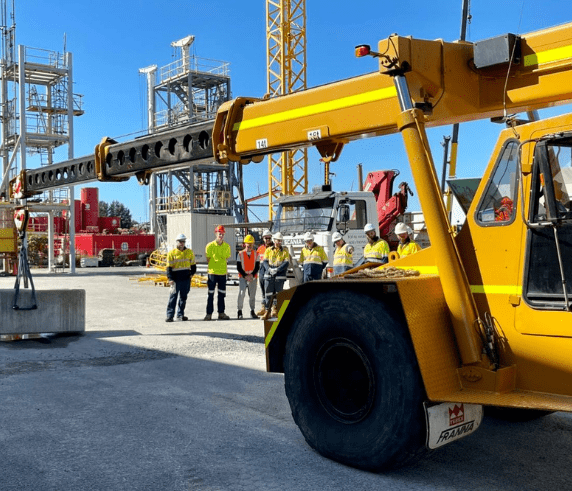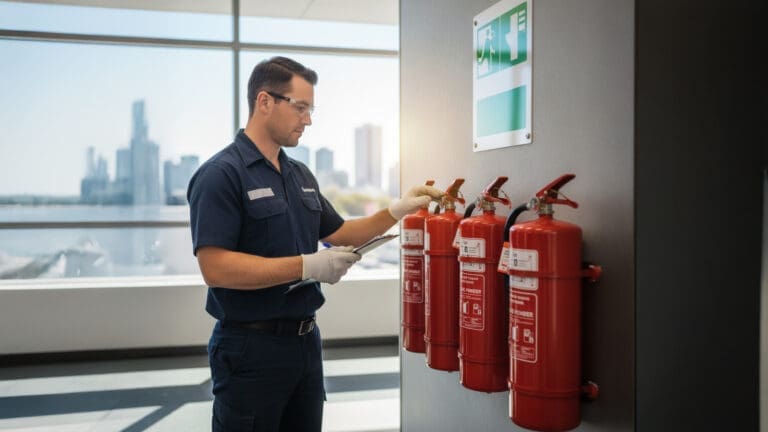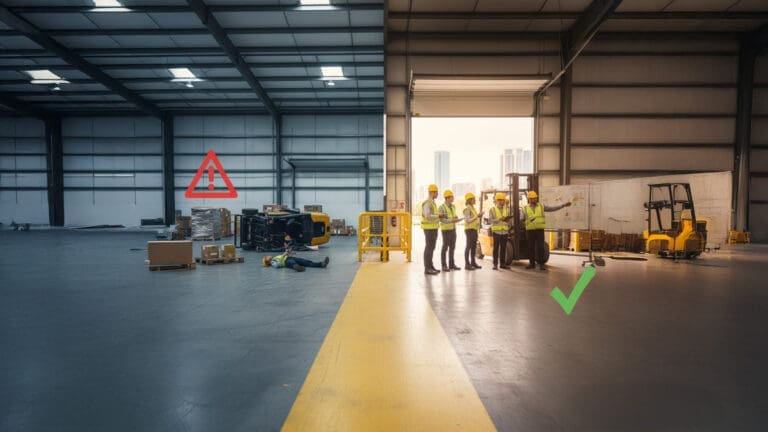Crane operations are a critical aspect of various industries, including construction, manufacturing, logistics, and more. To ensure safe and efficient crane operations, it is essential to undergo proper training and obtain the necessary certifications. Saferight offers a wide range of crane courses designed to equip you with the skills and knowledge needed to operate different types of cranes. In this blog, we will provide an overview of all crane courses available at Saferight.
Introduction to Crane Courses
Crane courses are designed to train individuals on the safe and efficient operation of various types of cranes. These courses cover everything from basic crane operation to advanced techniques and safety protocols. Saferight offers comprehensive training programs that cater to different levels of experience and specific crane types.
Types of Crane Courses
Mobile Crane Courses
Slewing Mobile Crane Courses
C6 Slewing Mobile Crane
Course Overview
The C6 Slewing Mobile Crane course is tailored for cranes with a capacity of up to 60 tonnes. It covers all aspects of crane operation, from planning to execution.
- Course duration: 4 days
- Course price: $1,600 AUD
- Accredited Unit: TLILIC0023 – Licence to Operate a Slewing Mobile Crane (Up to 60 tonnes)
- Delivery Location: Face-to-Face in Welshpool
- Assessment: Theory & Practical
Entry Requirements For C6 Slewing Mobile Crane Course
Participants must hold a current Statement of Attainment/Qualification for CPCCLDG3001 – Licence to Perform Dogging before attending this course. While this is not an industry requirement, Saferight requires all students who want to enrol into a crane course to possess a Dogging ticket.
This is crucial because crane operators must follow instructions from the Dogman. Without knowledge of Dogging or the role of a Dogman, a crane operator may not be able to assess whether the Dogman is performing the job correctly, which could lead to dangerous situations.
Units of Competency
- Plan Work/Task: Identify task requirements, confirm lift plan, assess site and crane capacity, establish communication, apply hazard control, and confirm traffic management.
- Prepare for Work/Task: Consult on crane operations, check risks, safely access crane, carry out pre-start checks, set up crane and counterweights, ensure compliance with weather conditions, confirm load weight and lifting points.
- Perform Work/Task: Ensure lifts within crane capacity, position boom/jib, connect hooks, conduct test lift, transfer loads safely, monitor crane movement, follow communication signals, land load securely.
- Pack Up: Stow equipment, secure crane components, apply locks/brakes, shut down crane, and perform post-operation checks.
How much do C6 crane operators make?
C6 crane operators in Australia are highly skilled professionals responsible for operating cranes with a capacity of up to 60 tonnes. Due to the critical nature of their work, which involves lifting and moving heavy loads in construction, mining, and other industrial sectors, they are well-compensated.
On average, C6 crane operators can expect to earn between $85,000 to $120,000 annually, or about $45 to $65 AUD per hour, depending on factors such as experience, location, and the complexity of the projects they work on. Those with extensive experience or who work in remote or high-demand areas may earn even higher salaries, reflecting the vital role they play in maintaining safety and efficiency on job sites.
C1 Slewing Mobile Crane
Course Overview
The C1 Slewing Mobile Crane course focuses on cranes with a capacity of up to 100 tonnes. This training is essential for operators working in construction and industrial projects.
- Course duration: 5 days
- Course price: $2,265 AUD
- Accredited Unit: TLILIC0021 – Licence to Operate a Slewing Mobile Crane (Up to 100 Tonnes)
- Delivery Location: Face-to-Face in Welshpool
- Assessment: Theory & Practical
Entry Requirements For C1 Slewing Mobile Crane Course
Before attending this C1 crane course, participants must hold a current Statement of Attainment/Qualification for:
- CPCCLDG3001 – Licence to Perform Dogging
- TLILIC0023 – Licence to Operate a Slewing Mobile Crane (Up to 60 tonnes)
While these are not industry-wide requirements, Saferight mandates that all students enrolling in a crane course possess these qualifications. Additionally, having current industry experience of operating a slewing mobile crane greater than 20 tonnes and up to 60 tonnes for at least 2 years will be highly beneficial.
Furthermore, the C1 licence covers cranes with a capacity of up to 100 tonnes. If a participant cannot competently operate a C6 crane, which handles up to 60 tonnes, they are unlikely to manage the complexities of operating larger cranes safely and effectively.
Units of Competency
- Plan Work/Task: Identify task requirements, confirm lift plan, assess site and crane capacity, establish communication, apply hazard control, and confirm traffic management.
- Prepare for Work/Task: Consult on crane operations, check safety, access and set up crane, stabilise, assess weather, confirm load weight, prepare lifting gear, ensure load destination stability.
- Perform Work/Task: Ensure lifts within crane capacity, position boom/jib, connect hooks, conduct test lift, transfer loads safely, monitor crane movement, follow communication signals, land load securely.
- Pack Up: Stow equipment, secure crane components, apply locks/brakes, shut down crane, and perform post-operation checks.
How much do C1 crane operators make?
C1 crane operators in Australia are well-compensated for their expertise in operating cranes with a capacity of up to 100 tonnes. On average, C1 crane operators can earn between $90,000 to $130,000 per year, depending on factors such as experience, location, and the specific industry in which they work.
Those with extensive experience or who work in remote, high-demand areas, such as mining or large-scale construction projects, can potentially earn even higher salaries. The role is critical in ensuring the safe and efficient operation of heavy lifting equipment, making it a well-respected and financially rewarding career in the heavy equipment industry.
CO Slewing Mobile Crane
Course Overview
The CO Slewing Mobile Crane course provides comprehensive training on operating slewing cranes with a capacity of over 100 tonnes. This course is designed for those involved in large-scale lifting operations.
- Course duration: 4 days
- Course price: $2000 AUD
- Accredited Unit: TLILIC0020 – Licence to Operate a Slewing Mobile Crane (Over 100 Tonnes)
- Delivery Location: Face-to-Face in Welshpool
- Assessment: Theory & Practical
Entry Requirements For CO Slewing Mobile Crane Course
Same like the C1 crane, before attending this CO crane course, participants must hold a current Statement of Attainment/Qualification for:
- CPCCLDG3001 – Licence to Perform Dogging
- TLILIC0023 – Licence to Operate a Slewing Mobile Crane (Up to 60 tonnes)
While these are not industry-wide requirements, Saferight mandates that all students enrolling in a crane course possess these qualifications. Additionally, having current industry experience of operating a slewing mobile crane greater than 20 tonnes and up to 60 tonnes for at least 2 years will be highly beneficial.
Units of Competency
- Plan Work/Task: Identify task requirements, confirm lift plan, assess site and crane capacity, establish communication, apply hazard control, and confirm traffic management.
- Prepare for Work/Task: Consult on crane operations, check safety, access and set up crane, stabilise, assess weather, confirm load weight, prepare lifting gear, ensure load destination stability.
- Perform Work/Task: Conduct lifts within crane capacity, position boom/jib, connect and use lifting gear, monitor load and crane movement, follow communication signals, safely land load.
- Pack Up: Secure crane equipment, apply locks and stabilizers, shut down crane, and perform post-operation checks.
How much do CO crane operators make?
On average, CO crane operators can earn between $135,000 to $150,000 AUD per year, depending on factors such as experience, location, and the specific industry in which they work. CO crane operators are paid more than C6 and C1 crane operators because they can handle larger loads and more complex operations. Holding a CO licence means that an operator is also qualified to operate C6 and C1 cranes, adding to their versatility and earning potential.
Those with extensive experience or who work in remote, high-demand areas, such as mining or large-scale construction projects, can potentially earn even higher salaries. The role is critical in ensuring the safe and efficient operation of heavy lifting equipment, making it a well-respected and financially rewarding career in the heavy equipment industry.
Non-Slewing Mobile Crane Courses
CN Non-Slewing Mobile Crane
Course Overview
The CN crane, commonly known as a Franna crane, stands out as a reliable and efficient tool as a Franna crane, stands out as a reliable and efficient tool for lifting loads exceeding 3 tonnes. The term “CN crane” refers to a non-slewing mobile crane, which is an essential piece of equipment for a variety of lifting tasks, particularly in environments where space is limited or maneuverability is key.
- Course duration: 4 days
- Course price: $1500 AUD
- Accredited Unit: TLILIC0040 – Licence to operate a vehicle loading crane (capacity 10 metre tonnes and above)
- Delivery Location: Face-to-Face in Welshpool
- Assessment: Theory & Practical
Entry Requirements For CN Non-Slewing Mobile Crane Course
Before attending this CN crane course, participants must hold a current Statement of Attainment/Qualification for:
While these are not industry-wide requirements, Saferight mandates that all students enrolling in a crane course possess these qualifications. As mentioned above, possessing a Dogging ticket is crucial because crane operators must follow instructions from the Dogman. Without knowledge of Dogging or the role of a Dogman, a crane operator may not be able to assess whether the Dogman is performing the job correctly, which could lead to dangerous situations.
Units of Competency
- Plan Work/Task: Confirm task requirements, lift plan, site condition, crane capacity, gear limits, assess paths, identify hazards, establish communication.
- Prepare for Work/Task: Consult on lift plan, check crane safety, set up crane, inspect logbook, assess weather conditions, calculate load weight and gear limits.
- Perform Work/Task: Conduct lifts within crane capacity, position boom/jib, use lifting gear, monitor load movement, follow communication signals, land load safely.
- Drive Articulated Mobile Crane: Secure crane items, perform operational checks, check tyre pressures, set boom for driving, follow traffic regulations.
- Driving Operations: Maneuver crane, maintain steering, apply one-handed techniques, manage braking, avoid driving hazards.
- Pack-up: Stow equipment, apply locks and brakes, shut down crane, perform post-operational checks.
How much do CN crane operators make?
On average, CN crane operators or Franna crane operators can earn between $65-$80 AUD per hour. Earnings can vary based on factors such as experience, location, and the specific industry. Operators who also hold additional qualifications, such as a Dogging ticket and a Rigging ticket, often command higher rates, reflecting their broader skill set and increased value on the job site.
Tower Crane Courses
A tower crane is a type of fixed crane that is mounted on a steel tower, allowing it to reach impressive heights while maintaining stability and lifting capacity. Unlike mobile cranes, tower cranes are anchored to the ground (or sometimes mounted on buildings) and can extend their reach horizontally through a jib, which is the long arm of the crane that extends out from the tower.
Tower Crane Operator
Course Overview
At Saferight, the Tower crane course will specifies the outcomes required to operate a tower crane for licensing purposes, and covers a jib or boom/job crane mounted on a tower structure, demountable or permanent, including both horizontal and luffing jib types.
- Course duration: 4 days
- Course price: $2500 AUD
- Accredited Unit: CPCCLTC4001 – Licence to Operate a Tower Crane
- Delivery Location: Face-to-Face in Welshpool
- Assessment: Theory & Practical
Entry Requirements For Tower Crane Course
Before attending this Tower Crane course, participants must hold a current Statement of Attainment/Qualification for CPCCLDG3001 – Licence to Perform Dogging.
Units of Competency
- Plan Task: Review instructions, consult for clarification, ensure compliance with safety standards and manufacturer requirements, identify hazards, calculate load weight, plan crane and load movement paths, implement traffic management, and establish communication.
- Prepare for Task: Ensure visibility of signs, assess weather conditions, safely access crane, test safety devices, conduct pre-start checks, verify crane logbook, and carry out operational checks.
- Transfer Load: Position boom/jib as directed, conduct test lift, transfer loads under guidance, use communication signals, and land load safely.
- Shut Down and Secure Crane: Apply brakes, shut down crane, perform shutdown checks, secure crane and equipment, exit safely, and report any issues.
How much do Tower crane operators make?
On average, Tower crane operators can earn around $90,896 AUD to $96,408 AUD per year in Australia. Earnings can vary based on factors such as experience, location, and the specific industry.
Vehicle Loading Crane Courses
Vehicle loading cranes are used to load and unload materials from vehicles. These cranes are mounted on trucks or trailers and provide the flexibility needed for various loading tasks.
Vehicle Loading Crane
Course Overview
The Vehicle Loading Crane course or also known as CV crane ticket, covers the operation of cranes mounted on vehicles. This training is essential for those involved in logistics and material handling, or people seeking work in operational roles in the mining and construction industries who are required to operate a vehicle loading crane with 10 metre tonnes.
- Course duration: 4 days
- Course price: $1700 AUD
- Accredited Unit: TLILIC0024 – Licence to operate a vehicle loading crane (capacity 10 metre tonnes and above)
- Delivery Location: Face-to-Face in Welshpool & Fremantle
- Assessment: Theory & Practical
Entry Requirements For Vehicle Loading Crane Course
Before attending this Tower Crane course, participants must hold a current Statement of Attainment/Qualification for CPCCLDG3001 – Licence to Perform Dogging.
Units of Competency
- Plan Work/Task: Identify task requirements, confirm lift plan, assess work area and crane capacity, identify hazards, confirm traffic management, and establish communication.
- Prepare for Work/Task: Consult on crane operations, ensure safety, access controls, conduct pre-start checks, set up crane and gear, stabilize crane, assess weather conditions, and confirm load weight and lifting points.
- Perform Work/Task: Execute lifts within crane capacity, position boom/jib, connect lifting gear, conduct test lifts, transfer loads, monitor crane movement, follow communication signals, land load safely.
- Pack Up: Secure crane equipment, apply locks and stabilizers, shut down crane, and perform post-operation checks.
How much do CV crane operators make?
On average, CV crane operators can earn around $36 to $45 AUD per hour in Australia. Earnings can vary based on factors such as experience, location, and the specific industry.
Why Choose Saferight’s Crane Courses?
Career Advancement
Completing a crane course at Saferight can significantly boost your career prospects. The skills and knowledge gained are highly valued in the industry, and employers often seek individuals with these certifications for key roles.
Practical Training
Our courses provide hands-on training with real-life scenarios, ensuring that participants are well-prepared to handle actual crane operations. The practical approach helps build confidence and competence in dealing with high-pressure situations.
Industry Recognition
Saferight’s courses are widely recognised within the industry, making them a valuable addition to your professional credentials. Our certifications demonstrate your commitment to safety and your ability to manage crane operations effectively.
How to Enrol
Enrolling in Saferight’s crane courses is straightforward. You can choose to enrol in any of the specific courses mentioned above based on your needs and career goals.
Enrol in Crane Courses
Explore our full range of crane courses and take the first step towards mastering crane operations. Enhance your skills, boost your career, and ensure safety in your workplace by enrolling in Saferight’s comprehensive training programs.
Conclusion
Crane operations are crucial for various industries, and proper training is essential to ensure safety and efficiency. Saferight offers a comprehensive range of crane courses designed to meet the needs of different industries and crane types. Whether you are looking to operate slewing mobile cranes, non-slewing mobile cranes, tower cranes, or vehicle loading cranes, Saferight has the right course for you.
Crane Courses Important Links
For additional information on crane safety and regulations, visit:

